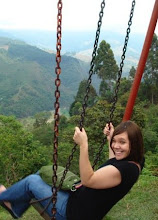Dear parents and students,
Please make a note of this: although I have mentioned it in class many times, I forgot to put one of this term's social studies logros on the letter I wrote to you and on the blog. At the beginning of Term 2 we learned about types of economic systems. This is on the final. We are reviewing it in class today, I also consider it part of the "Properties of a Country" goal.
The official goal is this: Students understand different types of economic systems and know which countries have that type of system.
They also need to know the definition of "economy." Here is my favorite definition:
Economy means the way money and "capital" are controlled in a country. "Capital" means things like natural resources and valuable resources, banks, stocks and bonds, businesses, factories, and farms. So, economy is about who is in charge and who has control of money and the ways we make money.
There are many types of economic systems. We only learned about a few...
Barter and Trade. This is a very old economic system. No country really uses it now, but sometimes very poor countries or countries with wars might have people who "barter and trade." Barter and trade means that people exchange goods and do not use money. For example, if I have ten fish and you have three chickens, I could give you five fish for one chicken. Or, if you have a mango and I have candy, I could trade you for a slice of mango and you could give me a piece of candy. Native Americans (indigenous people) used this system.
Feudalism. Feudalism is also an old economic system. It is what knights used a long time ago in Europe. Most people were very poor, and the knights had a lot of money. The knights (lords, kings, royalty) had huge farms and poor people would work on the farms. The knights would then give the poor people food and a home, and if there was a war or battle, the knights would protect the poor people. Countries like France had this system a very long time ago.
Capitalism. Capitalism is the system Colombia and the United States have. Many countries are capitalist. Capitalist countries are "free markets". That means that the government lets businesses and people do what they want. The government doesn't own business and people control natural resources, not the government. The government watches businesses to make sure they do not break laws, but it doesn't bother "industry" (businesses and companies) unless something bad happens. This allows people to be creative and start their own businesses.
Fascism. Fascism is when governments control all the business, natural resources, and exports. Usually, a dictator is in charge of the country. The most famous "fascist" countries were Germany and Italy in World War II and Spain after World War II. People associated with fascism are Adolf Hitler, Benito Mussolini in Italy, and Francisco Franco in Spain. (Only Italy was REALLY fascist, but the other countries were very, very close.) These countries are NOT fascist now.
Communism. Today, Vietnam, China, North Korea, Laos, and Cuba are communist countries. In other countries like India, Nepal, Cyprus, and South Africa, communist parties are involved in politics. Communism can only be the economic system of a country if the Communist Party is the ONLY political party in charge in that country. Communism is an idea that Karl Marx and Vladimir Lenin made famous. The idea is that the government controls money, natural resources, business, and production. They then divide EVERYTHING equally and everyone shares. That means no one would be "rich" and no one would be "poor", everyone would be the same. The FARC is a "Communist" group who wanted to make Colombia communist. Communism sounds good, but it has never successfully worked. The Soviet Union (It is called Russia now) was a communist country, but communism did not work there. Usually, the government becomes rich and keeps all the money, and the rest of the people are very poor.
Socialism. Socialism is a lot like Communism, except that it is ONLY an economic system, not a political system. Socialist countries are supposed to let EVERYONE in the country control the money and production. That means the government partially owns businesses. People and businesses pay high taxes. Money is divided almost equally among the people. The government is supposed to take care of everyone.
Welfare State. Many countries are "welfare states", at least a little bit. Welfare states are countries that have VERY high taxes (30 to 50%) based on how much money the citizens have. If you are poor, you pay lower taxes, and if you are rich, you pay more taxes. The government uses the tax money to take care of the citizens. Many welfare state countries have free education and free health care. Denmark, Sweden, Finland, and Norway are Welfare States. In those countries, if you do not have a job, the government will take care of you. If you go to the university, it is free, and the government gives you money to buy food and pay for an apartment. To get all those things, when you have a job, you have to give a lot of your money to the government in taxes.
Okay, that's it for Economic systems! I will post the rest of the social studies review online during lunch. Please make sure students study these things!
Wednesday, June 9, 2010
Subscribe to:
Post Comments (Atom)

2 comments:
ms melody tank you for put this to study is very cool because i can learn more and study better!
I'm glad you think it helps! Which student is this?? : )
Post a Comment